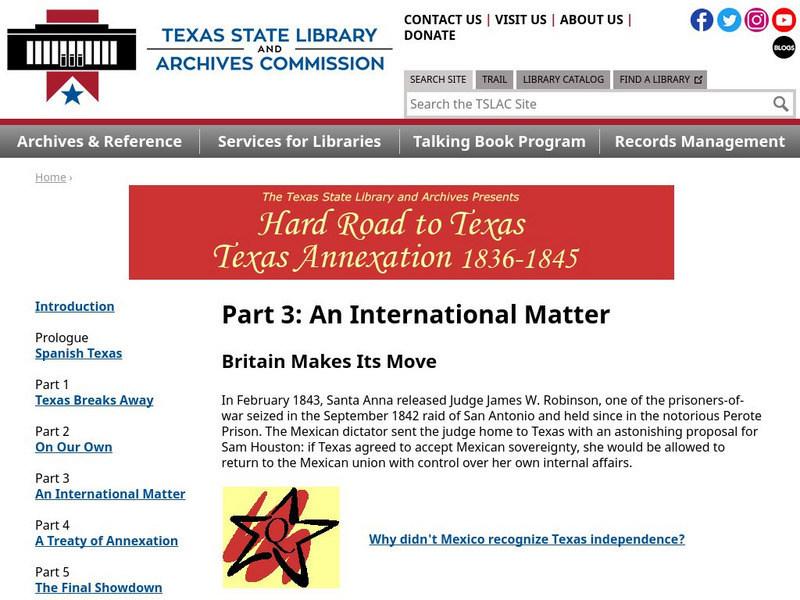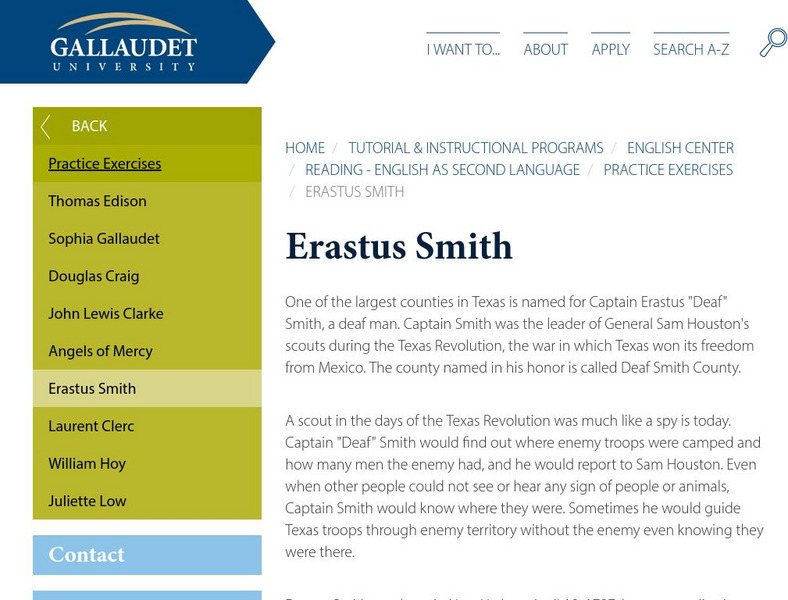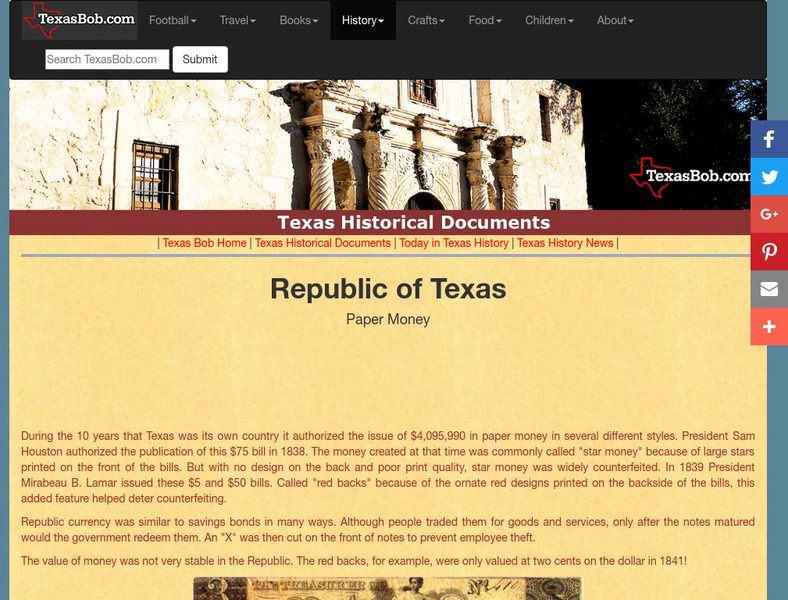Texas State Library and Archives Commission
Texas State Library and Archives Commission: Hard Road to Texas 1836 1845: International Matter: Britain Makes Its Move
Why didn't Mexico recognize Texas independence? What was Mexico's proposal for Texas president Sam Houston in 1843? Read about this period in Texas history and check out primary texts that will help you explore this stage in Texas'...
San Jacinto Museum of History
Herzstein Library: Smith, Erastus
This biography of Erastus Smith includes a deed to property in San Antonio granted to him by an Act of Congress, as well as other correspondence about Smith. Highlights his role as scout during fight for Texas independence.
Texas A&M University
Sons of De Witt Colony: Goliad Massacre: Execution of James Fannin
Vivid account of the Goliad Massacre and the execution of Colonel James W. Fannin. Site excerpts primary source references.
Other
Community Profile Network: Hereford History
Why does Texas have a county called "Deaf Smith"? Discover this hero of Texas independence who was a hearing-impaired mounted scout during the struggle with Mexico.
Texas State Library and Archives Commission
Texas State Library and Archives Commission: List of Wounded During the Storm of Bexar, December 1835
View an original spreadsheet denoting casualties and their status after the storming of a Mexican fort at Bexar (now San Antonio), Texas on December 5-10, 1835. Click the link to read a history of the event.
Other
Gallaudet University: Reading Exercise: Erastus Smith
This biographical sketch provides interesting details about the Battle of San Jacinto, in which Erastus Smith played a vital role.
Other
Republic of Texas: Paper Money
An overview with images and a brief history of the currency used in the Republic of Texas in the early nineteenth century.








